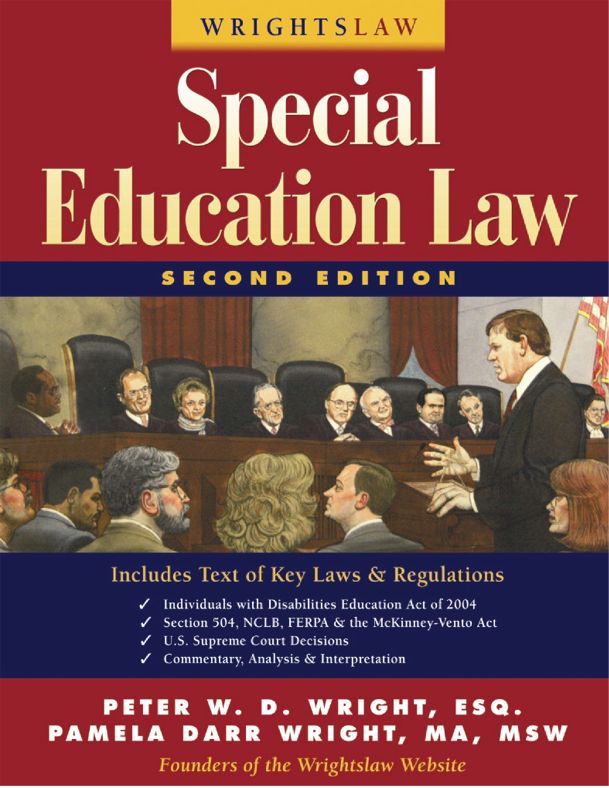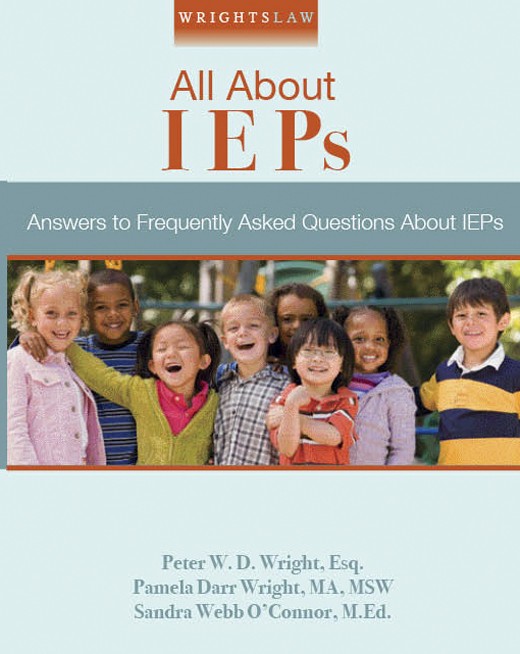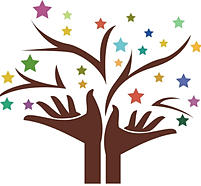Lending Library Item

Section One: Getting Started
In "Getting Started," you will learn:• Basic advocacy skills
• Supplies you need to get started
• How to develop a master plan for your child’s education
Section Two: Advocacy 101
In "Advocacy 101," you will learn about:• Schools as bureaucracies and the rules of the game
• Obstacles to success – school culture, myths, gatekeepers, and emotions
• Common causes of conflict
• Steps you can take to prevent or resolve problems
• Events that trigger parent-school crises
In "Getting Started," you will learn:• Basic advocacy skills
• Supplies you need to get started
• How to develop a master plan for your child’s education
Section Two: Advocacy 101
In "Advocacy 101," you will learn about:• Schools as bureaucracies and the rules of the game
• Obstacles to success – school culture, myths, gatekeepers, and emotions
• Common causes of conflict
• Steps you can take to prevent or resolve problems
• Events that trigger parent-school crises
Section Three: The Parent as Expert
In "The Parent as Expert," you will learn:• Why you must become an expert about your child’s disability and educational needs
• How to organize your child’s file, step by step
• How to use information from evaluations to understand your child’s disability
• How to use test scores to monitor and measure your child’s progress
• How to write SMART IEP goals and objectives
In "The Parent as Expert," you will learn:• Why you must become an expert about your child’s disability and educational needs
• How to organize your child’s file, step by step
• How to use information from evaluations to understand your child’s disability
• How to use test scores to monitor and measure your child’s progress
• How to write SMART IEP goals and objectives
Section Four: Special Education Law
In "Special Education Law," you will learn about:• The Individuals with Disabilities Education Act of 2004 (IDEA 2004)
• Findings and purposes of the IDEA
• Definitions in the IDEA
• Extended school year (ESY), child find, least restrictive environment (LRE), private placements, statewide assessments
• Requirements for identifying children with specific learning disabilities - Discrepancy Formulas and Response to Intervention (RTI)
• Evaluations, eligibility, IEPs, and placement
• Prior written notice, procedural safeguards, mediation, due process hearings, appeals, discipline, and age of majority
• Section 504 of the Rehabilitation Act
• The No Child Left Behind Act and implications for children with disabilities
In "Special Education Law," you will learn about:• The Individuals with Disabilities Education Act of 2004 (IDEA 2004)
• Findings and purposes of the IDEA
• Definitions in the IDEA
• Extended school year (ESY), child find, least restrictive environment (LRE), private placements, statewide assessments
• Requirements for identifying children with specific learning disabilities - Discrepancy Formulas and Response to Intervention (RTI)
• Evaluations, eligibility, IEPs, and placement
• Prior written notice, procedural safeguards, mediation, due process hearings, appeals, discipline, and age of majority
• Section 504 of the Rehabilitation Act
• The No Child Left Behind Act and implications for children with disabilities
Section Five: Tactics and Strategies
In "Tactics and Strategies," you will learn about:• “The Rules of Adverse Assumptions;” first impressions; image and presentation
• How to use logs, calendars, and journals to create paper trails
• How to write effective letters (includes sample letters)
• How to write a persuasive “Letter to the Stranger” (includes sample letters)
• How to use IEP worksheets, parent agendas, visual aids & graphs of progress or lack of progress (includes sample worksheets and agendas)
• Roles of experts; how to use an expert to help develop an appropriate educational program
• Pros and cons of recording meetings; strategies
In "Tactics and Strategies," you will learn about:• “The Rules of Adverse Assumptions;” first impressions; image and presentation
• How to use logs, calendars, and journals to create paper trails
• How to write effective letters (includes sample letters)
• How to write a persuasive “Letter to the Stranger” (includes sample letters)
• How to use IEP worksheets, parent agendas, visual aids & graphs of progress or lack of progress (includes sample worksheets and agendas)
• Roles of experts; how to use an expert to help develop an appropriate educational program
• Pros and cons of recording meetings; strategies
Current Status
Available


















